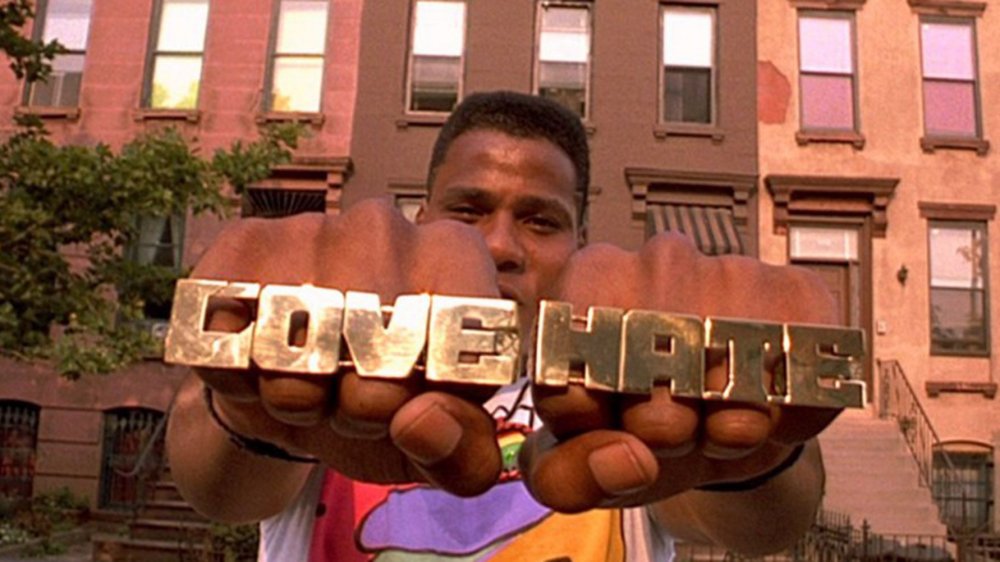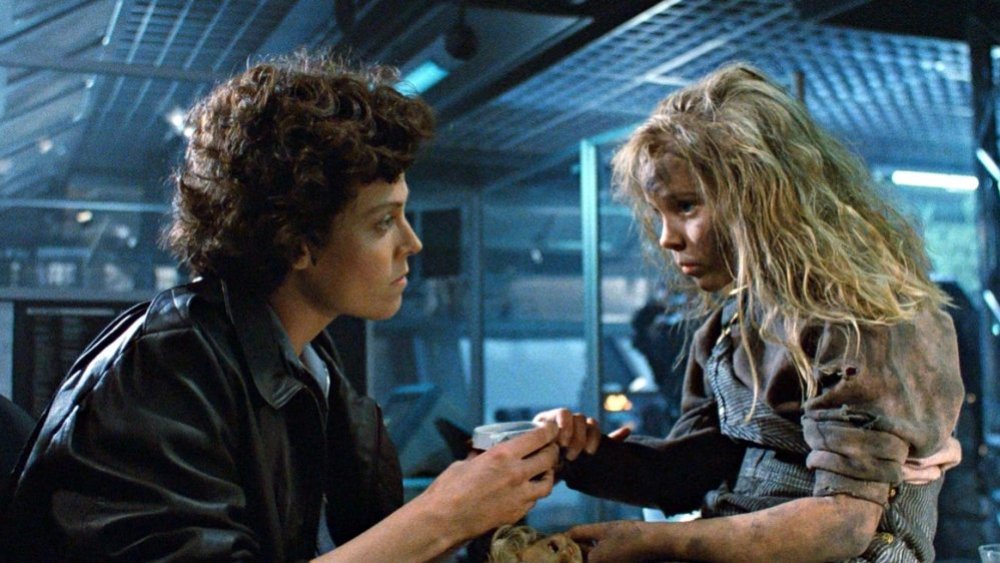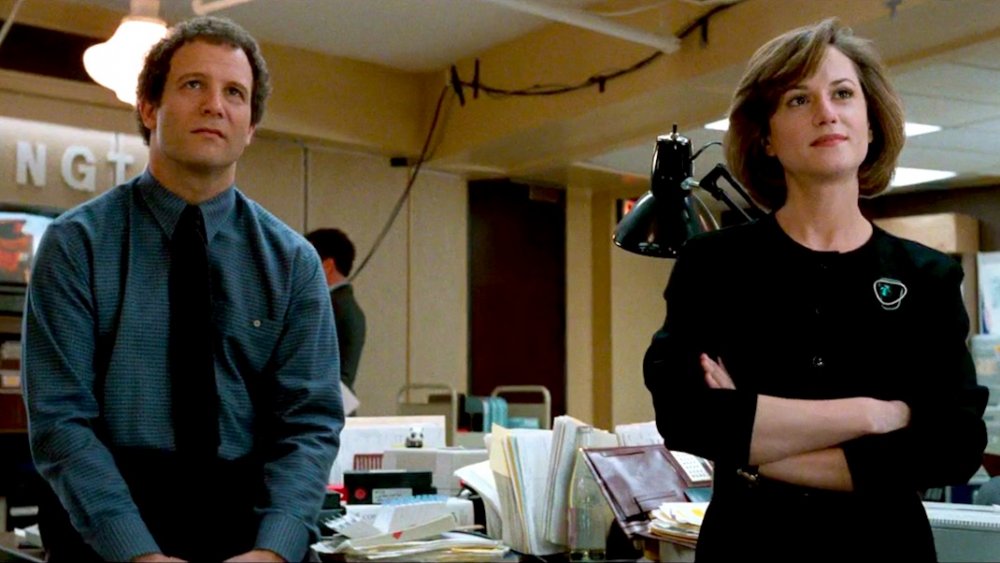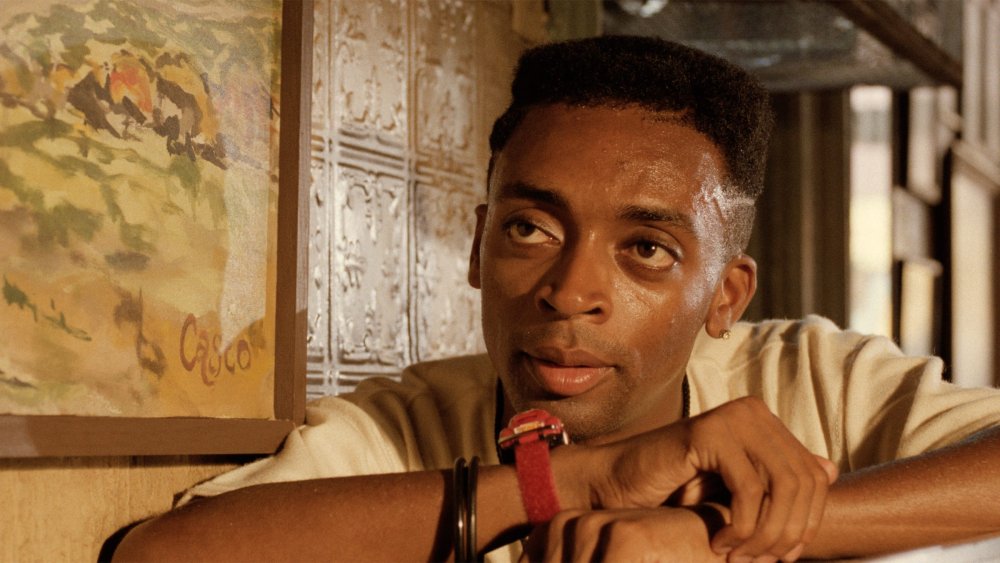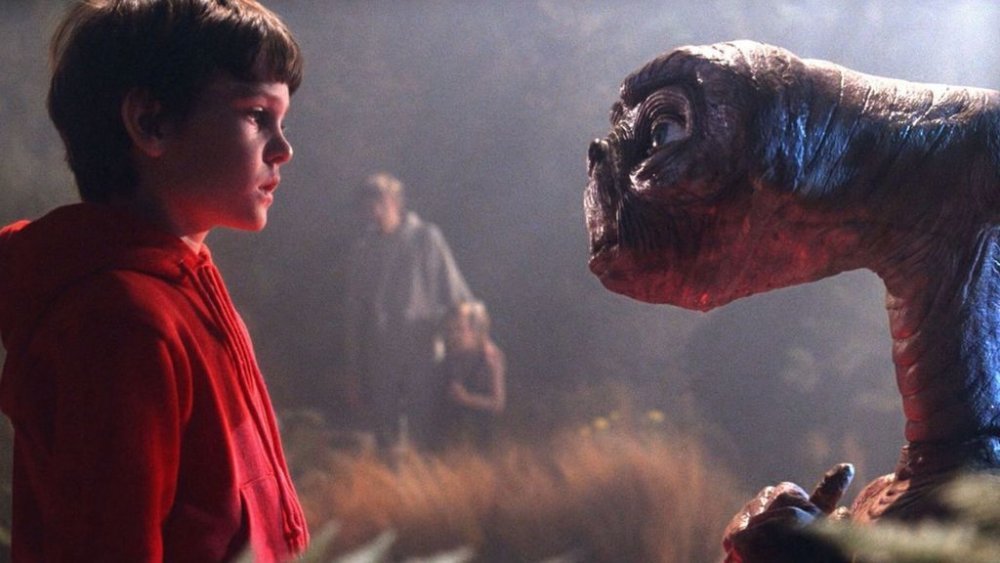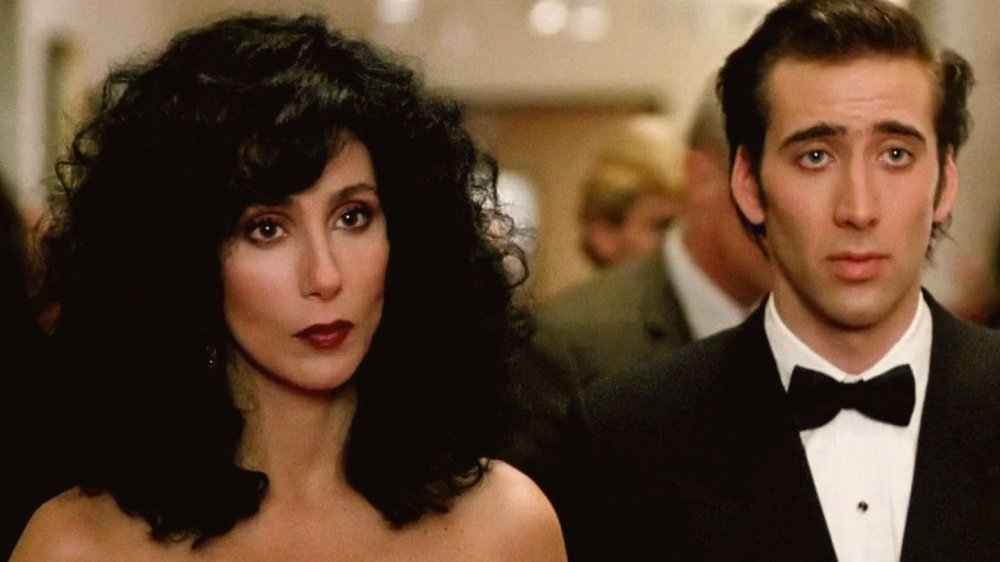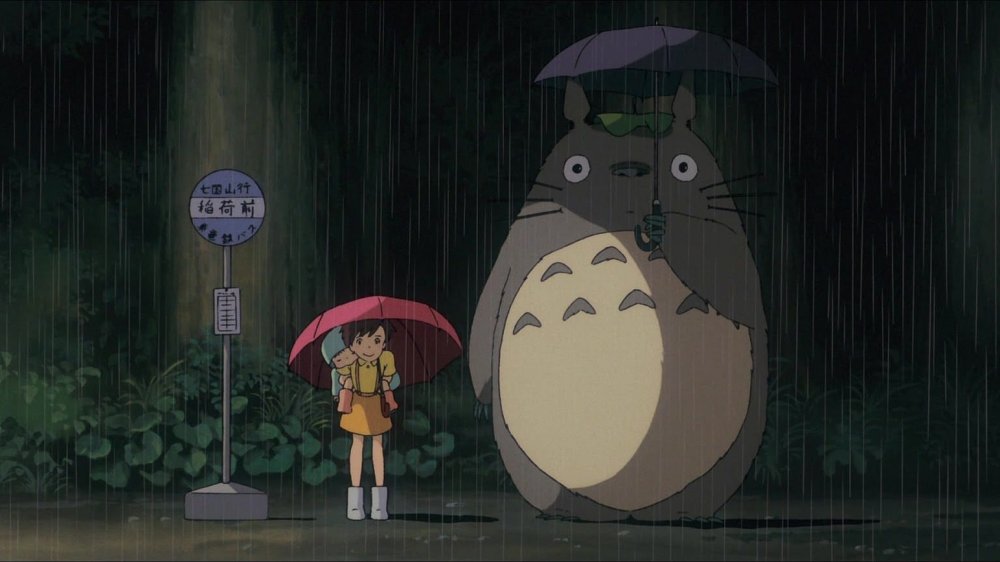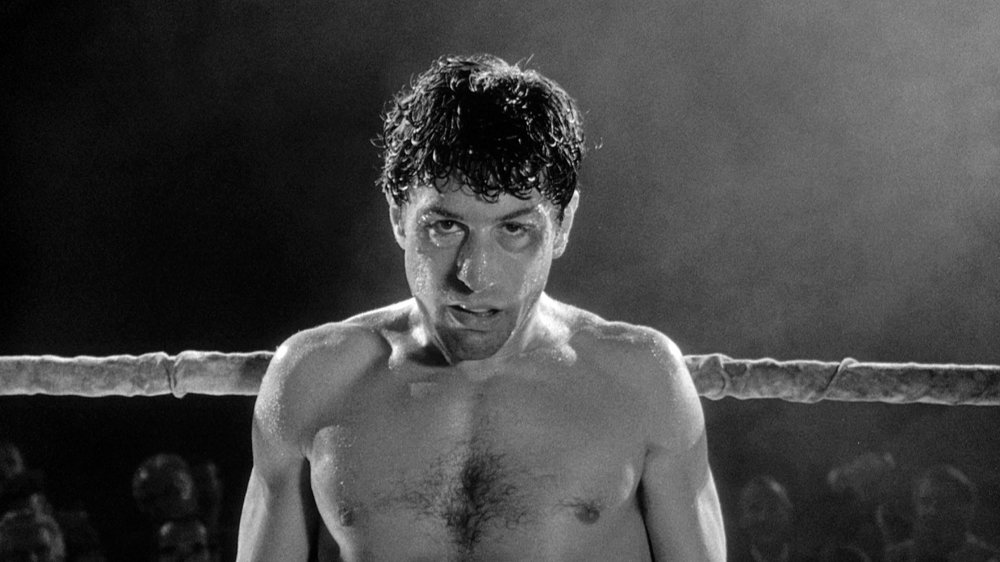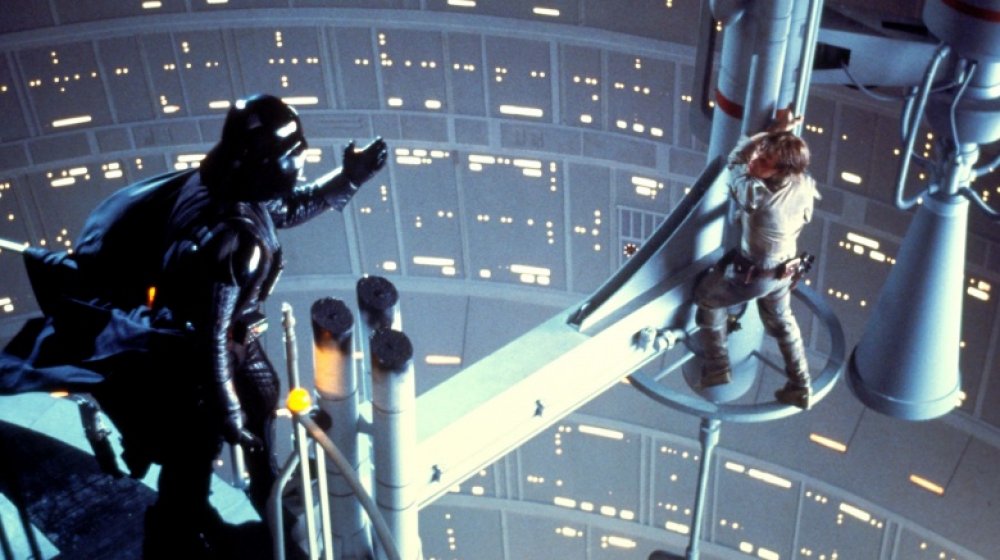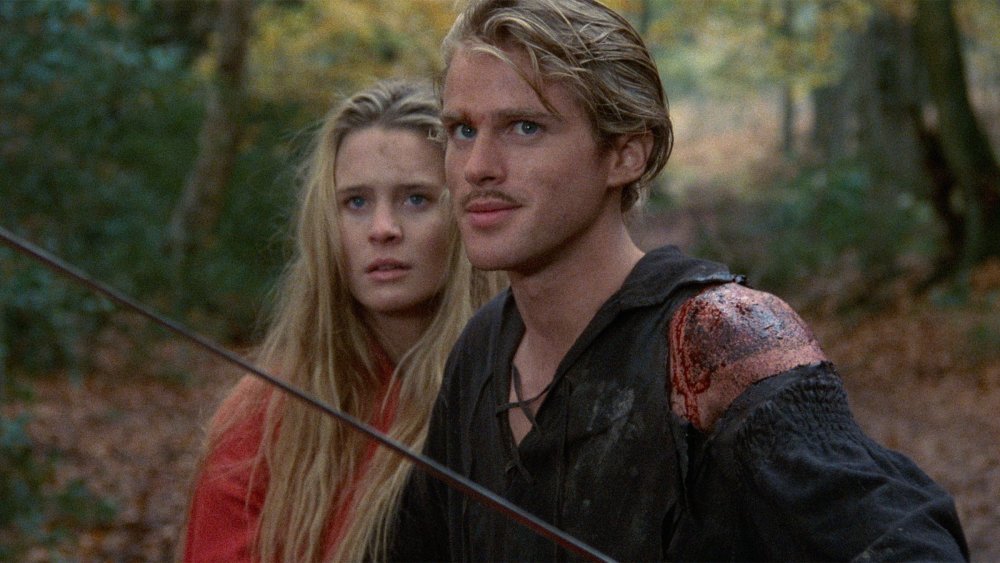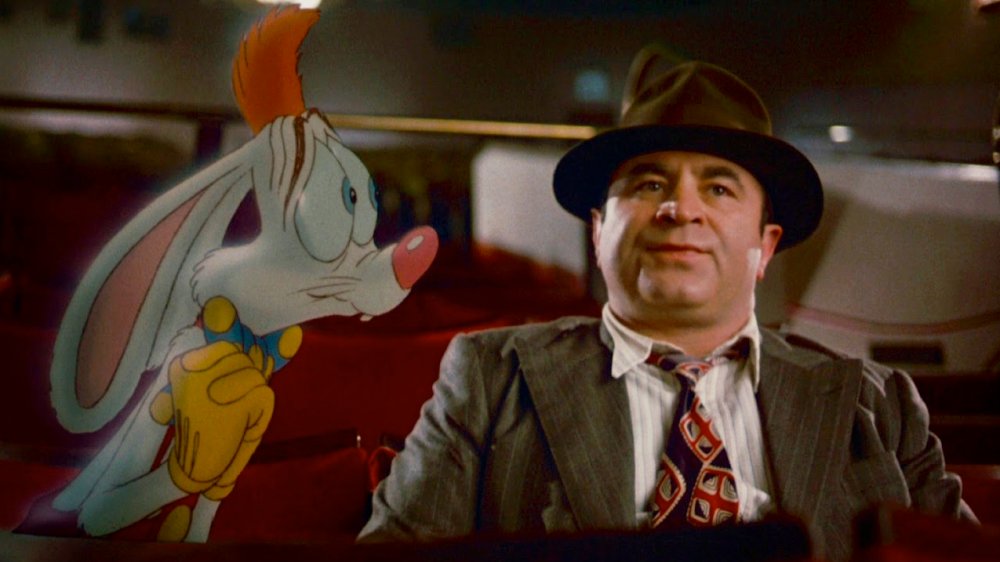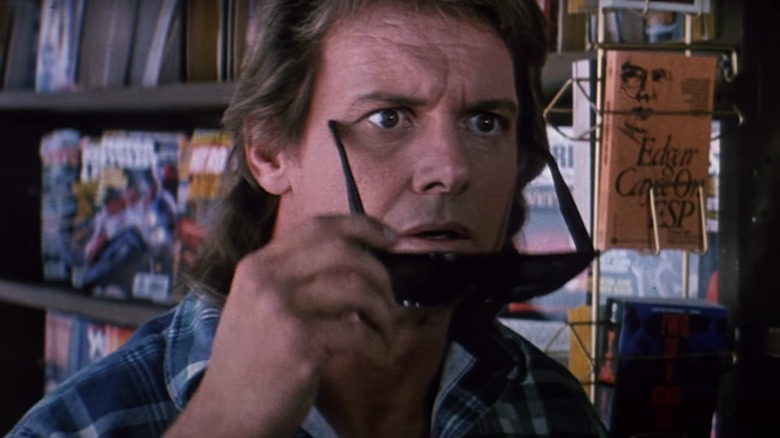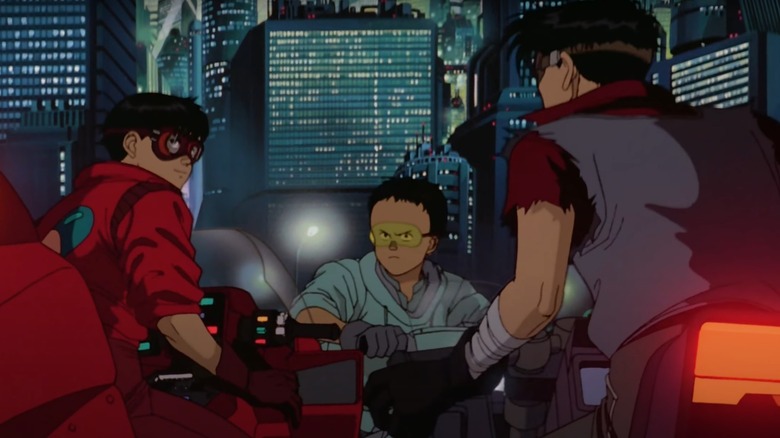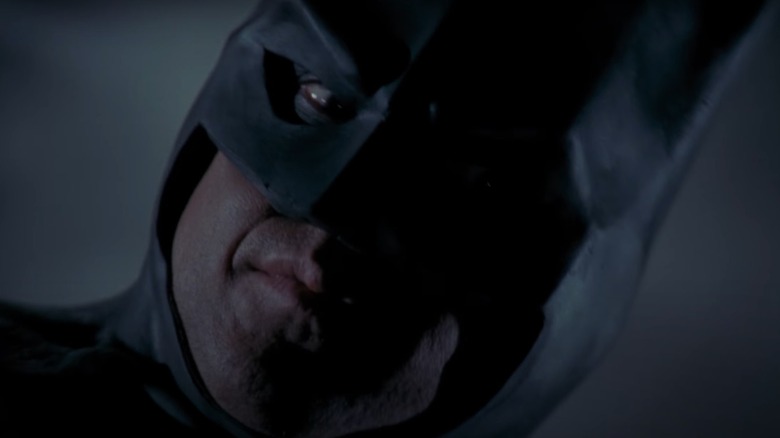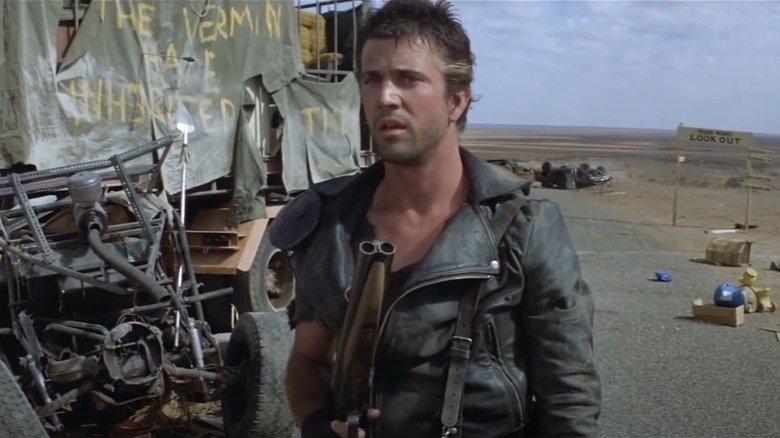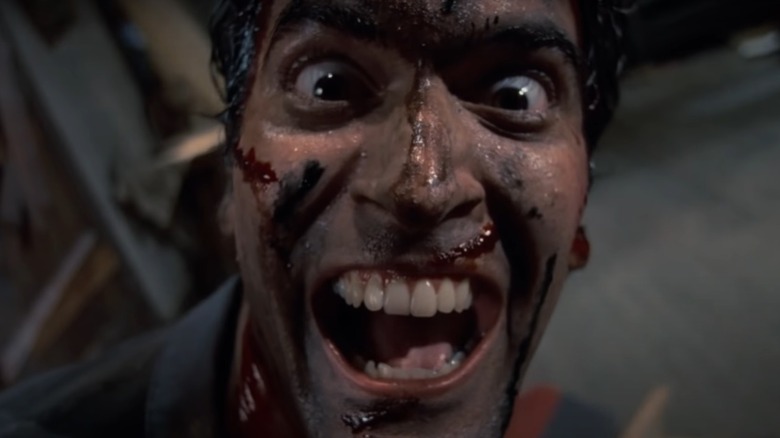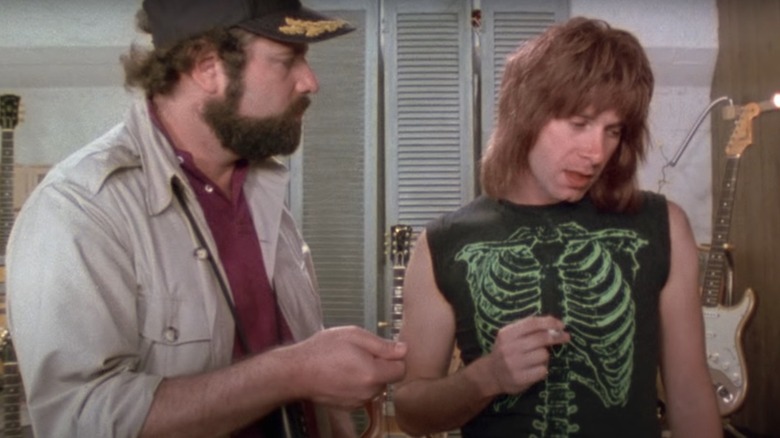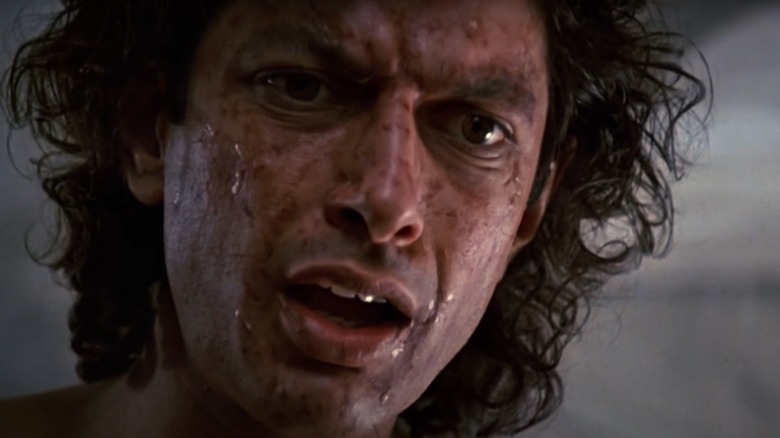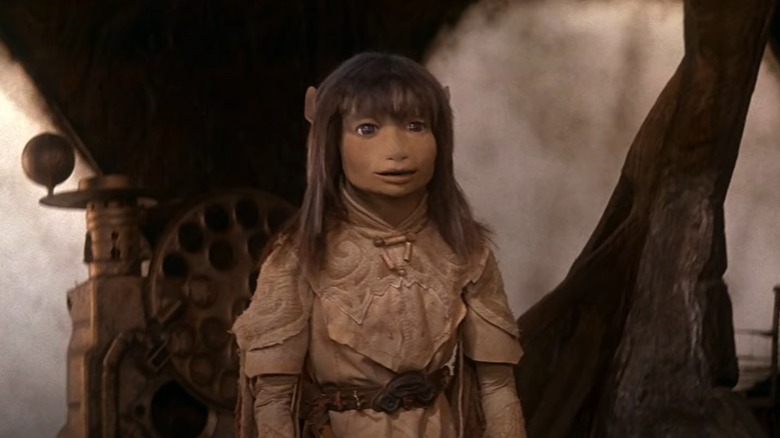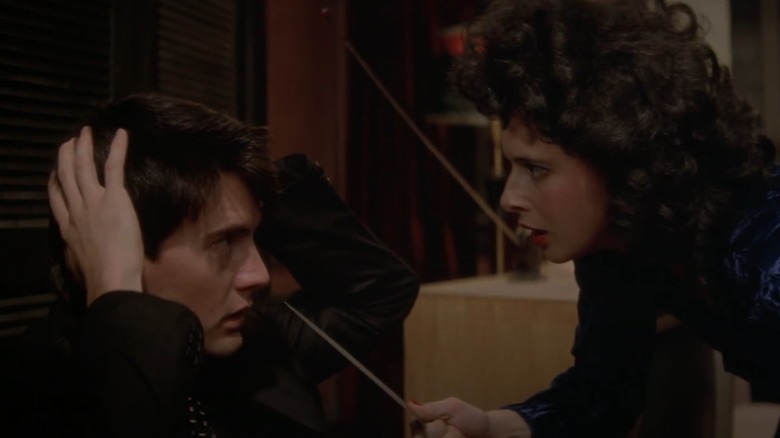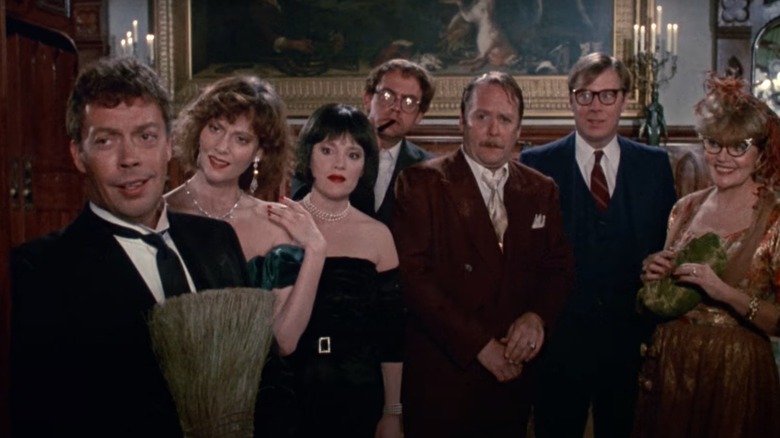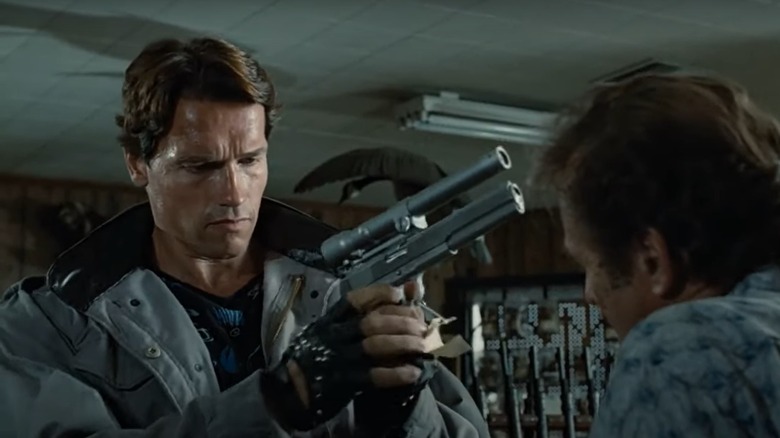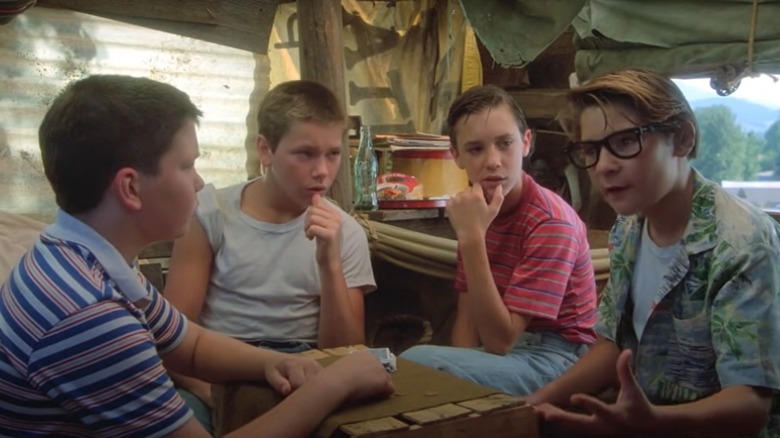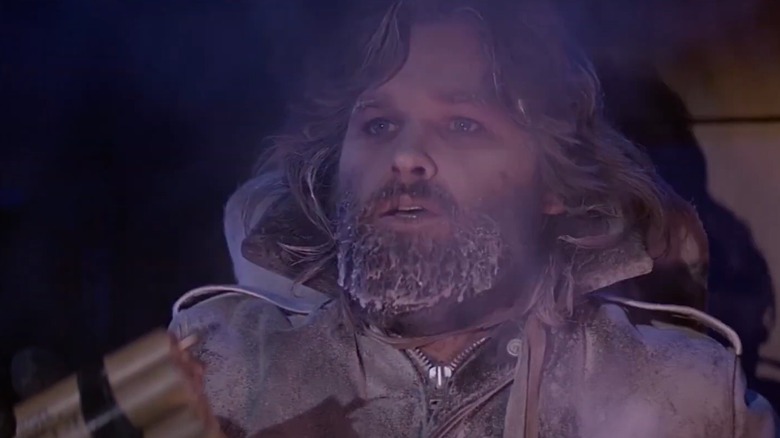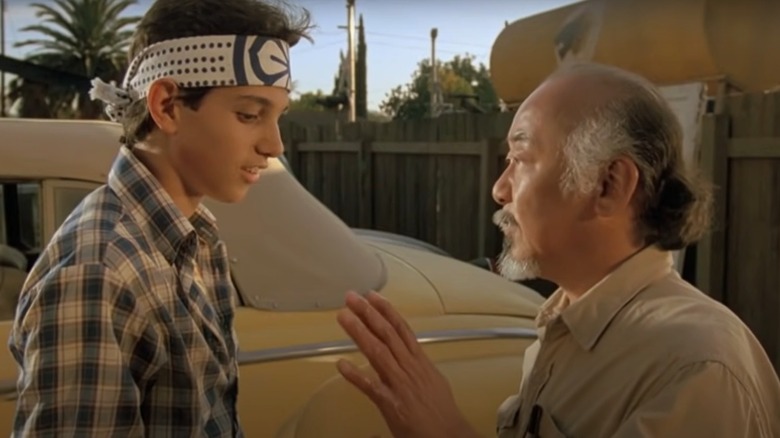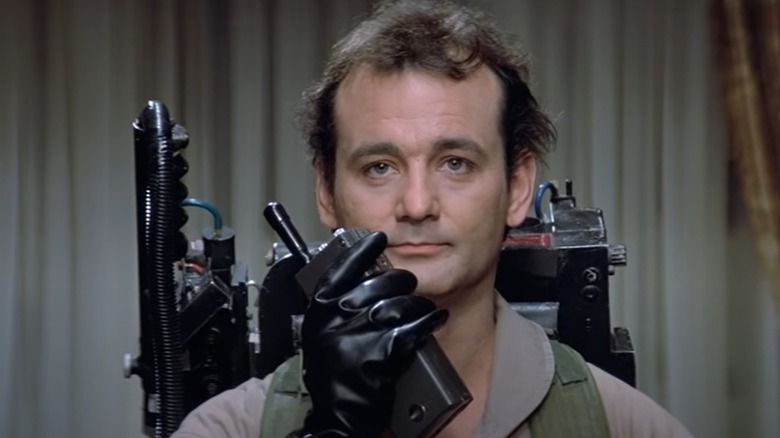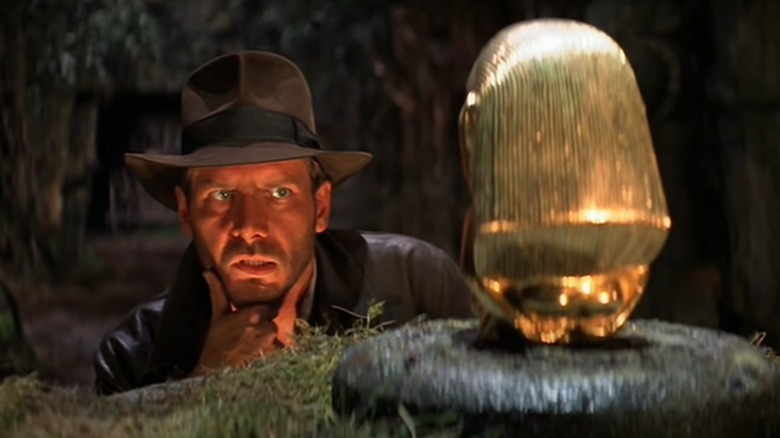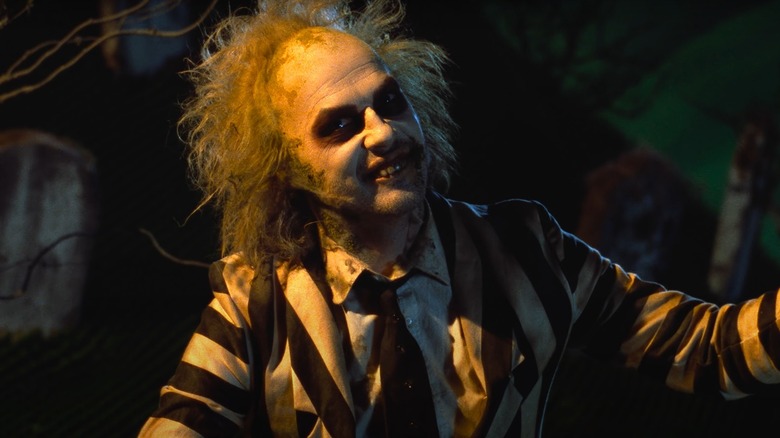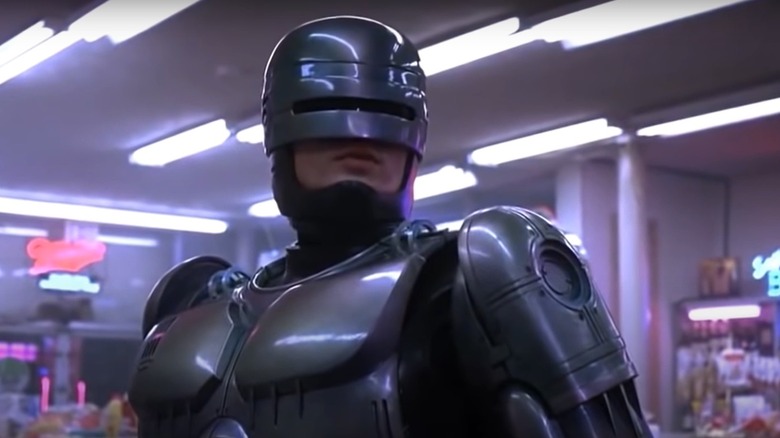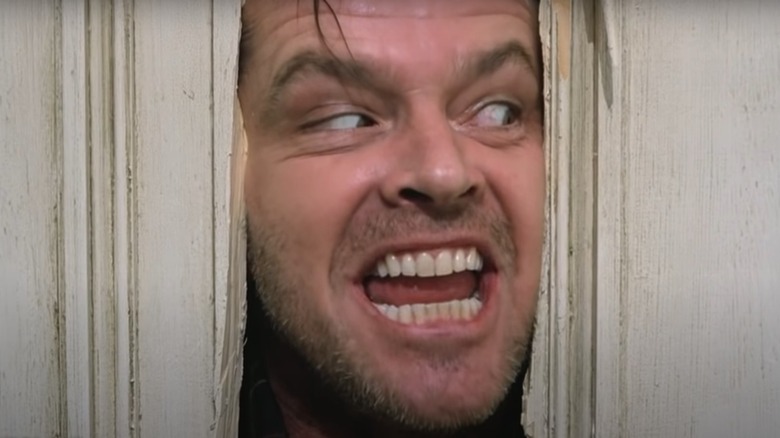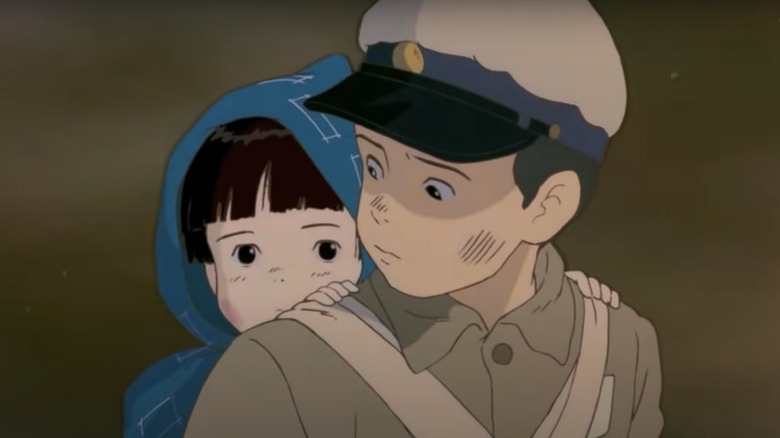Great '80s Movies That Still Hold Up Today
As time marches on, it's tough to reckon with nostalgia for days gone by. On the one hand, you're bound to have some fondness for the movies of your youth ... but you're also likely to revisit them, and discover that they just don't hold up. Sometimes, however, you dig up an old favorite from decades ago that remains every bit as great as you remember it being. Those movies, as rare as they are wonderful, exist simultaneously as time capsules of their era and as timeless reflections of the world at large.
We're here to honor those films that stand the test of time by examining standouts from the 1980s. These movies might be decades old, but they remain visually compelling, brilliantly crafted, and — for better or worse — relevant in our world today. From Oscar-winning classics to sci-fi spectaculars, let's take a look back at the movies of the '80s that shine as brightly today as they did upon the date of their release.
Aliens
After the success of Ridley Scott's 1979 masterpiece Alien, James Cameron stepped up to the plate to helm 1986's larger-than-life sequel, Aliens. Taking the core elements of Scott's original film and cranking things up a few hundred degrees, Cameron crafted what is still considered to be one of the best sci-fi films of the 20th century.
The film picks up after the events of the previous installment, with Ripley (Sigourney Weaver in an Oscar-nominated performance) waking up from her hyper-sleep 57 years later, in a world grown even more fast-paced and money-grubbing. She joins a hodgepodge action squad in investigating the planet from which the Xenomorph eggs emerged ... with disastrous results. Scott used the "humans must deal with an alien" premise as a jumping-off point for intimate horror, but Cameron goes full-on action movie. Aliens ratchets up the action and suspense, leading to an explosive and unforgettable finale that cemented the Alien franchise and Cameron himself as success stories.
Broadcast News
While today's television news landscape might seem to have little in common with that of 1987, James L. Brooks' critically-acclaimed Broadcast News makes it clear that little has fundamentally changed. In fact, it might have only grown more relevant in the intervening years. After all, aren't we debating questions of truthfulness, sensationalism, and accuracy even today? Has the problem of news portrayed as entertainment grown any smaller? If anything, the social media age has made Broadcast News more important than ever.
And boy, is it entertaining. This movie boasts Oscar-nominated turns from Holly Hunter, William Hurt, and Albert Brooks, all of whom seamlessly navigate rip-roaring comedy and tear-jerking drama. Decades later, Broadcast News remains an illuminating look at what happens when the smartest people in the room realize that happiness isn't guaranteed. Seriously — this is a movie that shines a light on the factory that is news media and manages to make an unwieldy love triangle work. That's not just notable — it's practically miraculous.
Do The Right Thing
The power and tragedy of Spike Lee's films lie in their simultaneous timelessness and specificity. Each one is situated within a very particular time and place ... yet they always end up reverberating years after their debuts. So it is with what is widely considered Lee's masterpiece, 1989's Do the Right Thing.
This day-in-the-life Brooklyn story examines racial tensions simmering on a hot summer's day. Do The Right Thing took Lee's bold storytelling to new heights of comic tragedy: It chronicles a community that is torn inside-out by people refusing to care for each other with joy, sadness, and irony. Through the lives of the Black, Italian-American, and Korean-American residents of the Bed-Stuy neighborhood, Lee's film weaves a tapestry of story unlike any other. Decades later, Americans are still facing the repercussions of not being able to choose what is right over what is comfortable. Until then, Do the Right Thing will remain relevant.
E.T. the Extra-Terrestrial
You can't talk about cinema of the 1980s without talking about Steven Spielberg. And you can't talk about Spielberg without talking about his child-meets-alien blockbuster smash, E.T. the Extra-Terrestrial. No other movie has quite been able to capture the strange brand of whimsy E.T. exudes — it's creepy, it's cute, it's altogether weird, but in a way that works. Given the fact that the movie also features an all-star John Williams score and some seriously cool puppetry, it's no surprise it was such a massive success ... and that other films haven't been able to replicate its unique sense of wonder.
It's that sense of wonder that gives E.T. its serious staying power. You might think you're completely beyond sympathizing with Elliot now that you're an adult, but within minutes, E.T. proves you wrong. You remember that the child you once were lives within you still, waiting to be woken up by the right work of art — especially one you likely first enjoyed as a child. E.T. is a kids' movie through a kid's eyes, and as such, its sense of magic is undimmed. Even adults are affected by such open commitment to love, empathy, and altruism.
Moonstruck
Finding an '80s comedy that holds up can sometimes feel like trying to find a needle in a haystack — an awkward, homophobic, frequently racist, and downright groan-worthy haystack. But 1987's Moonstruck, the romantic comedy that earned Oscar gold for Cher, Olympia Dukakis, and screenwriter John Patrick Shanley, has withstood the test of time. It presents a gloriously demented look at two Italian-American families, the love that exists within them, and the lives they've carved out in Brooklyn Heights. It's loud, heartfelt, and every bit as hilarious today as it was in 1987.
Moreover, Director Norman Jewison and screenwriter Shanley's delightful comedy doesn't just charm viewers with a sprawling story of inter-generational drama — it manages to wrap that drama up in a bow by the film's end. Moonstruck is a master class in screenwriting and story structure many filmmakers could learn from. A truly great movie can deposit you in a world that feels rich and wild beyond the brief glimpse you get of it: Relationships have weight and characters have history, even if you never know exactly how or why. Moonstruck doesn't just accomplish this — it makes it look easy. You meet the characters, you watch them clash, love, and change, and then you see them taken to a satisfying and well-constructed end. It sounds simple, but when it's done well, it is transcendent, and it's why Moonstruck stuns to this day.
My Neighbor Totoro
Hayao Miyazaki, master of animated whimsy, has won the hearts and minds of fans worldwide with classics like Kiki's Delivery Service, Porco Rosso, and the masterpiece that is Spirited Away. But early on in his career, Miyazaki created a film that's not only as charming as the rest of his oeuvre, but whose title character has become the symbol of Studio Ghibli as a whole and one of the most recognizable animated characters worldwide to boot.
1988's My Neighbor Totoro isn't a plot-driven movie. It mainly focuses on the day-to-day lives of two young sisters who have moved to the countryside to be closer to their hospitalized mother. Miyazaki's all-ages feature stands out today against a sea of loud, attention-seeking animated films — it's uniquely simple, and profoundly patient. Totoro takes the time to linger on a garden, sleeping animals of the forest, and the soaring branches of an old and mighty tree. And yet somehow, Totoro is also absolutely enrapturing for every moment of its just-under 90-minute runtime. Totoro was an early example of Miyazaki's genius, and still stands out as one of Studio Ghibli's most impressive creations.
Raging Bull
With the release of 2019's The Irishman, Martin Scorsese further solidified his reputation as a master filmmaker. And it's not like he wasn't already well-regarded: This is, after all, the man who made Goodfellas, The Wolf of Wall Street, and Taxi Driver. Scorsese has also been an instrumental force in supporting up-and-coming filmmakers in the field, and his World Cinema Project has preserved and restored films from all over the world. The man's a legend by absolutely any metric.
Whether you're a newcomer to his work or just want a reminder of how good Scorsese has been for decades, check out 1980's Raging Bull. A boxing drama that hits as hard as it did on its day of release, it's likely one of Scorsese's best movies. It's a stark, intimate look at the chaotic life of Jake LaMotta, a boxer whose personal tragedies had a way of entering the ring with him. Anchored by a titanic leading performance from Robert De Niro and featuring some of the most iconic imagery of Scorsese's career, Raging Bull is a cinematic epic that will last more than a few rounds in the ring.
The Empire Strikes Back
1977's Star Wars kicked off a cinematic revolution that 1980's The Empire Strikes Back securely cemented. Decades later, time has only further highlighted the importance and artistry of this darker and more ambitious entry in the Star Wars saga. With series creator George Lucas passing the directing reins over to Irvin Kershner, Star Wars was able to grow into an epic tale of good and evil, bursting with complex relationships, dark themes, and truly oddball creatures from across the galaxy. It's vast, innovative, and anchored in true pathos. And it's just as good today as it was in 1980.
From the introduction of historic characters like Yoda and Lando Calrissian, to that final jaw-dropping reveal of Darth Vader's relationship to Luke, The Empire Strikes Back fires on all cylinders. It bumps up the visuals, deepens the world's lore, and takes a few risks that pay off massively. Empire proved that George Lucas' vision of a galaxy far, far away had staying power. And boy oh boy, has it stayed with us.
The Princess Bride
If you were to look up "cult classic" in the dictionary, you'd surely find a number of cinematic entries, but The Princess Bride would undoubtedly be near the top of the list. Adapted from William Goldman's book of the same name, this subversive fairy tale, directed by Rob Reiner, tells the story of the abiding love between Westley and Buttercup. Though he's a farm boy and she's a princess, their love cannot be smothered by any stricture or obstacle — and boy, do they encounter a few of each. The Princess Bride sees them, alongside a cast of unforgettable characters, traverse a fantasy landscape brimming with action and comedy that thrills to this day. Moreover, there's still something especially heartwarming about seeing the young boy in the framing device of the film slowly warm up to the story, which is being told to him by his grandfather.
With a screenplay full of some of the most quotable lines in film history, plus scene-stealing turns from Wallace Shawn, Mandy Patinkin, Carol Kane, and Billy Crystal, The Princess Bride lives on as a hilarious ode to the power of romance and storytelling from generation to generation.
Who Framed Roger Rabbit
In a world where live-action actors are thrown into computer-generated landscapes in almost every blockbuster, it might be hard to remember exactly how groundbreaking Who Framed Roger Rabbit was upon its initial release. Going back and watching the film, it's still mesmerizing to see Bob Hoskins' drunkard detective Eddie Valiant seamlessly walking the same street as hand-drawn Yosemite Sam and Dumbo. It's a true technical marvel that time has only improved — it still looks incredible, in today's age of Avatar and Guardians of the Galaxy's Groot.
But beyond its visual achievements, Who Framed Roger Rabbit functions just as brilliantly as a classic detective story. This movie spins a grade-A mystery out of the conflict between the real world and Toontown, perfectly balancing the zany animated antics of Roger Rabbit with the hard-edged emotional turmoil of Detective Valiant. In so many ways, the movie shouldn't work: It's an odd blend of grown-up and kid-friendly themes and mediums, it's a smoky noir in which characters like Betty Boop and Mickey Mouse appear, and it's meta-textual in pretty much every direction. And yet, it all comes together to create something unlike any other movie. If you're looking for a satisfying mystery that's got more than a few tricks up its sleeve, Who Framed Roger Rabbit is the ideal choice.
They Live
Based on Ray Nelson's classic science fiction short story "Eight O'Clock in the Morning," John Carpenter's "They Live" stars late professional wrestler turned actor Roddy Piper as drifter John Nada, who discovers that the world around him is not as it seems. After rolling into Los Angeles and finding work at a construction site, he gets involved with a bunch of rebels who claim that the masses are being subliminally controlled via the media. When the group's HQ is raided by authorities, Nada escapes with a pair of sunglasses that allow him to see the truth — the ruling class is actually a race of aliens in disguise.
"They Live" wasn't particularly well received at the time, possibly because its central theme rubbed a lot of people the wrong way in 1980s America. Carpenter's film is a direct attack on class divides and consumer culture, and it is just as (if not more) relevant in the 2020s than it was when it was released in the dying days of the Reagan era. "The same problem — unrestrained capitalism — still exists," Carpenter told Yahoo!. "The mentality that the '80s bred is really alive and well." This moody actioner is known as a cult classic today, seen as a uniquely personal entry in the horror filmmaker's catalog. "'They Live,' Carpenter's 1988 paranoid freakout, deserves to be thought of as a masterpiece, an artist's defiant last grab at substance before losing the thread," said Rolling Stone.
Akira
Based on his manga of the same name, Katsuhiro Otomo's anime classic "Akira" takes place in a dystopian version of Tokyo that sprung up from the ashes of the former city following a devastating explosion. We come to learn the true nature of that explosion over the course of 124 gloriously animated minutes that still look as striking today as they did in 1988. The film follows best friends Kaneda and Tetsuo, members of a biker gang who run into something unexpected while out on a drive one night. When Tetsuo collides with Takashi (one of the Espers, a trio of powerful psychics) he begins to develop abilities that he cannot control. It's up to Kaneda to stop his friend before he becomes consumed by rage and brings destruction to Neo-Tokyo.
It's widely seen as one of the best anime films of all time, and "Akira" is also one of the best films of the 1980s, animated or otherwise. It's still a big deal in its home country to this day, and it's become a must-see cult classic worldwide. Otomo's tour de force "inspired a generation of creators in Japan and helped jump-start an appreciation of anime in the West," said The Japan Times. "'Akira' has seeped into every pop culture crack imaginable: from dance music to top streetwear brands to the Steven Spielberg film 'Ready Player One.'" If you're new to '80s anime, this is a great place to start.
Batman
DC fans rejoiced when it was revealed that Michael Keaton would be reprising the role of Batman for Ezra Miller's "The Flash" movie. The actor's take on the Dark Knight is still held in high regard to this day, though the Batman fanbase didn't exactly welcome him with open arms when he was cast as Bruce Wayne in the 1980s. "The fans went nuts," producer Michael Uslan told Back Issue. "I thought they were going to surround Warner Bros. with torches and pitchforks." Even Uslan couldn't see Keaton as Batman, but director Tim Burton stood by the decision, and the rest is history. "He knew he could do it with Keaton," said Uslan. "And ultimately, he proved everybody else wrong."
1989's "Batman" is still as engrossing today as it was when it first hit cineplexes, taking us to a version of Gotham that only Tim Burton could have created — laced with the quirky camp of the classic TV series, but definitely not aimed at kids. Jack Nicholson's manic turn as the Joker is the perfect foil for the stoic and somewhat eccentric Keaton. "He's the first actor, and still the only actor, to capture just how weird you'd need to be to respond to a childhood trauma by putting on a costume and beating up criminals," said GQ. The film stands alongside Richard Donner's "Superman: The Movie" as the two major blueprints for the modern superhero movie.
Mad Max 2
He's played Scottish freedom fighters, he's played famous mutineers, he's even played a cocky circus rooster, but the role that's come to define Mel Gibson's career is the one that first put him on the map. Gibson made his debut as Max Rockatansky in George Miller's low-budget dystopian thriller "Mad Max" (1979), in which we got the now-famous character's origin story: he's a member of Australia's highway patrol who goes vigilante after his wife and child are run down by a gang of biker thugs. Australia is in chaos following war and widespread resource shortages in Miller's universe. Things are already pretty bad Down Under in the first film, but by the time we catch up with Max in 1981's "Mad Max 2" (released as "The Road Warrior" in the United States), the country has virtually collapsed.
This time around, Max goes up against the Marauders, another gang of thugs that roam the dusty outback looking for gasoline, food, and trouble. They find the latter in Max, who, still haunted by the loss of his family, has nothing left to lose. It's a typical Mel Gibson performance — and we mean that in the best of ways. This '80s classic is often considered Gibson's best movie, and it still holds up well to this day. "Time hasn't diluted The Road Warrior's impact," said The Guardian when it revisited the film. "Decades later it still comes on like gangbusters, offering a visceral oomph quite unlike anything else."
Evil Dead II
Filmmaker Sam Raimi and regular collaborator Bruce Campbell burst onto the horror scene in 1981 with their low budget gorefest "The Evil Dead," which was made for only $375,000 and went on to gross almost $30 million at the worldwide box office. It was a staggering success for "a couple of guys who did it in their basement," SFX coordinator Greg Nicotero, who came on board for the 1987 sequel, told The Hollywood Reporter. "'Evil Dead II' was really a big budget remake of the first 'Evil Dead' — the idea that they had a couple million dollars to make this movie versus the few hundred thousand they made the first movie with. Sam really pushed the envelope."
By bringing in some Hollywood pros, Raimi was able to level up when it came to makeup, and the team he assembled produced some brilliant practical effects that still look great by current standards. In fact, the "real" blood that they used (and they used a lot of it) looks far more convincing than the CGI blood seen in modern horror movies. It's funnier than a lot of current comedies, too — unlike the first film, "Evil Dead II" is designed to get as many laughs as scares. "I didn't understand the comedy aspect until I got to know Sam," Nicotero added. "He has a fantastic imagination." The film is laced with Raimi's signature dark humor, and Campbell is perfectly in tune with his vision.
This Is Spinal Tap
Mockumentary filmmaking is commonplace nowadays, but long before "The Office" and "Modern Family" utilized it so well, Rob Reiner showed the world how it was done in his directorial debut, "This Is Spinal Tap." Reiner features in the seminal film himself as Martin "Marty" Di Bergi, a documentary maker on tour with the fictional English rock band Spinal Tap. The initial idea came from actor and screenwriter Christopher Guest, who was inspired by a conversation he overheard in an L.A. hotel (a British rock band was checking in, and the bassist had left his bass at the airport). Despite being largely improvised, the film is hilarious from start to finish and contains dozens of endlessly quotable lines — if you've ever heard a joke about something going "up to 11," it comes from Spinal Tap's amps.
Writer Christopher Guest also stars in the film alongside Michael McKean and Harry Shearer. It's ultimately their chemistry and their comedic timing that make this '80s classic so great. The music and fashion may have moved on since the world met the titular rockers in 1984, but the comedy in "This Is Spinal Tap" hasn't aged one bit. "It remains the funniest, truest, most emotionally honest movie ever made about rock & roll and the people who live for it," Rolling Stone declared on the film's 30th birthday. "Can you trace the influence of this film through pop culture through the years? That would be like trying to dust vomit."
The Fly
Before he played a mathematician in "Jurassic Park" and a satellite technician in "Independence Day," Jeff Goldblum starred as another eccentric genius in David Cronenberg's remake of "The Fly." Goldblum's Seth Brundle is a brilliant scientist who creates a pair of teleportation pods that, after some tinkering (and a dead baboon), work on humans. The visionary inventor is undone by something so insignificant he doesn't even notice it — a common fly. When one enters the pod with him, he comes out on the other side spliced with fly DNA. Slowly, Brundle begins to transform into a human-fly hybrid, and it is still as toe-curling today as it was back in 1986.
It begins with a few rogue hairs popping up, first from a wound in his back and then from his face. Brundle stubbornly refuses to believe that he's in danger and, on account of his increased awareness and agility, calls the experiment a success. When his fingernails begin to fall off, however, he's forced to admit that something has gone wrong. Goldblum's terror is palpable during the transformation process, and Geena Davis brings her A-game as science journalist Veronica Quaife, turning in one of the best performances of her career. Cronenberg's classic body horror is the standout film in a franchise that dates back to the 1950s. "'The Fly' arguably remains David Cronenberg's masterpiece, over 30 years after its release," said Den of Geek. "The movie transcends the story's pulpy origins."
The Dark Crystal
Interest in Frank Oz and Jim Henson's "The Dark Crystal" hit a new high when Netflix released the critically acclaimed prequel series "The Dark Crystal: Age of Resistance" in 2019. Viewers who weren't even born when the all-puppet fantasy epic dropped in 1982 started to check it out, and they found that, despite the three-and-a-half-decade gap between them, the original film still holds up. The story unfolds in a world named Thra, where a Gelfling (a race of elf-like beings and the primary protagonists in the "Dark Crystal" story) named Jen has been asked to fulfill a prophecy: overthrow the tyrannical (and still, to this day, absolutely terrifying) Skeksis by finding a missing shard of the titular crystal and fixing it.
"The Dark Crystal" was met with mixed reviews upon release, though that's primarily because it got marketed as a movie for kids, despite being anything but (the result was a generation of scarred children). A cult following grew around the movie once people began to see it for what it was; a dark fantasy story for grown-ups that just happened to be told with puppets. In a world of CGI and green screens, it makes for a nostalgic escape. "'The Dark Crystal' remains a wonderfully crafted adventure from a simpler time," said Film School Rejects. "The effort and talent required for its creation are still visible on the screen in the design of the smallest creature on up to the biggest set or matte painting."
Blue Velvet
Regularly ranked as the best film on his weird and wonderful resume, 1986's "Blue Velvet" has been called David Lynch's masterpiece by more than one film critic. The director was given the chance to get back to his roots after his big adaptation of Frank Herbert's classic sci-fi novel "Dune" bombed at the box office, and the result was a surreal and sexy thriller that baffled many at the time but went on to inspire a generation of filmmakers. "The hip, meta, retro films of the mix-and-match 1990s learned everything they knew from Lynch," said the BBC. "There are echoes of 'Blue Velvet' not just in the work of Tarantino, but of Robert Rodriguez, Jim Jarmusch, and the Coen brothers."
Lynch gave "Dune" star Kyle MacLachlan the lead role of Jeffrey Beaumont, a college student who returns to his Middle American hometown to take over a family-run store after his father suffers a stroke. When Jeffrey discovers a severed ear with no apparent owner, he decides to try and find out who it belongs to, which leads him to the apartment of cabaret singer Dorothy (Isabella Rossellini). It makes for uncomfortable viewing when Dorothy catches him spying, but that's nothing compared to the relationship that develops — "Blue Velvet" did ultra-kinky long before "50 Shades of Grey" came along, and it's ten times as shocking. Everything about the film still holds up, from MacLachlan and Rossellini's otherworldly performances to Angelo Badalamenti's jazz-infused score.
Clue
A movie based on a classic board game that angered critics before earning a cult status, 1985's "Clue" still has a dedicated following more than three decades later. Jonathan Lynn's farcical black comedy about a murder at a secluded New England mansion was made with alternate endings, and audiences saw different versions depending on which cineplex they visited. It was a stunt that left veteran film critic Roger Ebert fuming ("Why doesn't the studio abandon the ridiculous multiple-ending scheme and show all three endings at every theater?"), but it added to the intrigue surrounding the picture and helped "Clue" become a must-see movie in the long run. It's still very much worth your time today, for Tim Curry's performance if nothing else.
The ensemble cast includes Eileen Brennan (Mrs. Peacock), Madeline Kahn (Mrs. White), Christopher Lloyd (Professor Plum), Michael McKean (Mr. Green), Martin Mull (Colonel Mustard), and Lesley Ann Warren (Miss Scarlet), but it's Curry that steals the show as Wadsworth, the butler. He was best known for his turn as Dr. Frank-N-Furter in "The Rocky Horror Picture Show" at this point in time, and he brought that same electric energy to Wadsworth, constantly moving and talking at pace. "Tim is a very disciplined guy," Michael McKean told BuzzFeed. "Every time when Marty and I would be goofing around — we thought quietly — between takes, Tim would give us a look like, 'I'm trying to remember the f****** phone book here.' And he can give a good look."
The Terminator
The Terminator went down in pop culture history as a protector of man thanks to 1991's "Terminator 2: Judgment Day," in which Arnold Schwarzenegger's killing machine is reprogrammed and sent back in time to keep the young John Connor (Edward Furlong) safe from harm. Schwarzenegger was an established star at this stage and it made sense to have him on the good side, but in the first film, he's a cold-blooded murderer who will stop at nothing in his quest to kill Sarah Connor (Linda Hamilton), John's mother. It's gritty and violent, endlessly stylish, and one of the most perfectly paced films you'll ever see, action or otherwise.
Released in 1984, "The Terminator" was not only a calling card for Schwarzenegger but James Cameron, too. "'The Terminator' came from a dream that I had while I was sick with a fever in a cheap pensione in Rome in 1981," the filmmaker told BFI in a 2021 interview. "It was the image of a chrome skeleton emerging from a fire. When I woke up, I began sketching on the hotel stationery." The largely unknown director was able to bring his vision to screen as he imagined it that night, and it's still considered a benchmark in genre filmmaking to this day. Later installments in the franchise haven't exactly lived up to the standard set by "The Terminator," but with a 100% rating on Rotten Tomatoes, few sci-fi and/or action films do.
Stand By Me
It seems strange that perhaps the most memorable Stephen King film of all time is not horror, but even the author admits that "Stand By Me" is a perfect adaptation. According to director Rob Reiner, King "was pretty broken up" the first time he saw the film, which is based on his novella "The Body." Reiner told the Chicago Tribune: "He excused himself for about 15 minutes. When he came back he said, 'That's the best film ever made out of anything I've written.'" There have been dozens more Stephen King adaptations since then, and while some of them have been successful (2017's "It" was a critical and commercial smash hit), none are likely to live as long in the memory as "Stand By Me," a coming-of-age masterpiece for the ages.
The film follows four boys (Wil Wheaton, River Phoenix, Corey Feldman, and Jerry O'Connell) who decide to track down a dead body after overhearing some older kids talking about its location deep in the woods. They laugh and fight and cry along the way, opening up about their lives and deepening their bonds. It's the ultimate friendship tale, and the mature performances are as impressive now as they were at the time: it's hard not to be moved when River Phoenix's character, Chris, breaks down in tears. "Three decades on, this particular movie's influence and legacy remains," said iNews, pointing to the film's clear influence on the hit Netflix show "Stranger Things."
The Thing
Many of the '80s films on this list were ahead of their time, perhaps none more so than "The Thing." Believe it or not, John Carpenter's seminal sci-fi horror got roundly trashed upon release in summer 1982. Steven Spielberg's "E.T. the Extra-Terrestrial" had come out a few weeks earlier, and Ridley Scott's "Blade Runner" hit cineplexes on the exact same day (June 25), offering audiences otherworldy thrills without the extreme violence. People literally left test screenings of "The Thing" to vomit, so gruesome and disturbing were the death scenes. "Of course, the gory bits and creature designs from legendary Rob Bottin are now considered the absolute pinnacle of practical effects work," said Bloody Disgusting. "These many years later it's hard to imagine 'The Thing' being considered anything less than a genre masterpiece."
Kurt Russell stars as R.J. MacReady, a helicopter pilot and one of a group of Americans stationed at a research facility in Antarctica. When chaos erupts at a nearby Norweigan station, the U.S. team investigates and discovers that an extraterrestrial lifeform has survived a crash landing, frozen in the ice. The parasitic alien assimilates with other organisms, and when they realize this, paranoia takes over. Any one of them could be "the thing," and Carpenter keeps the audience guessing throughout with a masterclass is suspenseful filmmaking. This claustrophobic gorefest still looks fantastic, and it sounds great, too — Ennio Morricone's score captures the terror of mistrust and isolation perfectly.
The Karate Kid
The unexpected success of the belated sequel series "Cobra Kai" has catapulted "The Karate Kid" back into the public consciousness in recent years, though this '80s classic was always guaranteed a place in pop culture history. Even if you've never sat down to watch the original film, chances are you've seen it referenced or quoted somewhere. From "wax on, wax off" to "sweep the leg," John Avildsen's beloved movie is packed full of memorable lines, but it's the relationship between the main characters that makes it so special — and studio interference almost ruined that.
According to writer Mark Robert Kamen, execs at Columbia were happy with the movie but they wanted it to be a little bit shorter. To achieve that, they were going to cut the scene in which Pat Morita's Mr. Miyagi gets drunk and mourns the loss of his wife and son, who died in a prisoner of war camp. It's a moving story that comes out of nowhere and hits Daniel LaRusso (Ralph Macchio), as well as the audience, like a truck. Kamen insisted that the film be tested with the scene intact, and he was proven right by the reaction of the audience. Today, it's considered a highlight in a movie that's distinctly 1980s, yet refuses to age. "I do think 'The Karate Kid' holds up because it's genuine and the emotional beats are universal," Kamen told Uproxx. "And also because Pat Morita and Ralph Macchio were magic, especially Pat."
Ghostbusters
We've had sequels, we've had reboots, and we've had a number of animated spinoff shows, but nothing that's come since has been able to compare to the original "Ghostbusters" film. Studio bigwigs had major doubts in the beginning, though what began as an expensive risk paid off handsomely. It was Dan Aykroyd that came up with the initial idea, but director Ivan Reitman and co-star Harold Ramis helped shape it into the film we would come to love, changing the setting to New York and making the city a big part of the picture.
"Ghostbusters" follows parapsychologists Peter Venkman (Bill Murray), Ray Stantz (Aykroyd), and Egon Spengler (Ramis) as they go into business in the Big Apple. After a slow start, they're suddenly swamped with cases and begin to investigate the origins of a supernatural surge in the city. With the help of new recruit Winston Zeddemore (Ernie Hudson), they discover that the god of destruction Gozer the Gozerian is about to arrive in New York, and only they can help. It's a simple plot, but everything about the film is executed perfectly. "It really is a perfect comedy," Judd Apatow told Vanity Fair. "It was all those people at the height of their powers. They had mastered their craft."
Raiders of the Lost Ark
The 1980s saw the introduction of a new cinematic icon in Indiana Jones, who made his big-screen debut in 1981 and appeared in two sequels before the decade was out. 1984's "Indiana Jones and the Temple Of Doom" has not aged well at all (the somber tone and the film's depiction of India has rightfully come in for criticism in the years since), and while 1989's "Indiana Jones and the Last Crusade" recaptured the spirit of the first film, it doesn't hold up as well as the original.
"Raiders of the Lost Ark" was our introduction to Harrison Ford's gunslinging archaeology professor, a character inspired by the serialized dramas of the 1930s and '40s that creators Steven Spielberg and George Lucas grew up on. Jones does battle with a French rival and the Nazis as he attempts to reach the Ark of the Covenant (a long-lost relic with the power to make an army invincible) before they do. It's a film full of memorable moments, and Spielberg's insistence on using practical effects and filming on location means it looks as great as ever.
The shoot was beset with troubles (Ford was suffering from dysentery at one stage), though audiences loved the globetrotting adventure, which mixed classic sensibilities with New Hollywood filmmaking. "Four decades later, the iconic hit has become the pivot point between cinema's past and present," said The New York Times when "Raiders of the Lost Ark" turned 40 in 2021.
Beetlejuice
Tim Burton was in demand after making his directorial debut with the critically acclaimed comedy "Pee-wee's Big Adventure" in 1985, but he was holding out for a project suited to his sensibilities. "I was being offered any bad comedy," Burton told the Independent. "It was a case of, you do a bad comedy, you get offered all the bad comedies." Eventually, he got his hands on "Beetlejuice," which began life as a straight-up horror movie before being reworked into the hilariously macabre cult classic it's known as today.
The film stars Alec Baldwin and Geena Davis as a recently deceased couple struggling to haunt their old home. They want the pompous new inhabitants Charles and Delia Deetz (Jeffrey Jones and Catherine O'Hara) gone, so they enlist the help of Betelgeuse. Michael Keaton's character was a hostile, terrifying demon in the first draft, but Burton brought his particular brand of humor to proceedings, and the result is a bizarre but brilliant movie that has aged like a fine wine.
Winona Ryder gives a breakout performance as apathetic daughter Lydia Deetz, but it's Keaton who steals the show here. His hyperactive performance remains something to behold, and for him, it's the perfect film. "From an art perspective, I don't know how you get better than 'Beetlejuice,'" he said. "If you consider the process of taking something from someone's mind and putting it on the screen, I think that movie is incomparable. When things are like that, they'll just last forever."
RoboCop
Like many of the entries on the list, Paul Verhoeven's subversive classic "RoboCop" was grossly misunderstood at the time of its release. Set in a sleazy, run-down future version of Detroit, the film became notable for its dark tone and extreme violence, but underneath all the blood and metal is a stinging rebuke of Ronald Reagan's America. It follows police officer Alex Murphy (Peter Weller), who is brought back to life by a megacorporation after being brutally gunned down by a vicious gang. Omni Consumer Products transforms Murphy into a cyborg cop and before long he's on the streets, mercilessly cleaning them up.
It is, of course, immensely satisfying seeing thugs and rapists get what's coming to them, and "RoboCop" remains highly entertaining in that regard — but the ultra violence on display isn't a simple stylistic choice. Verhoeven uses it as a way to frame Murphy's lost humanity and warn against the dangers of selling vital public services to the highest bidder (OCP owns the police force in the film and has every intention of taking its cyborg soldiers to the military). His message hits just as hard today. "In 1987, Verhoeven and writers Edward Neumeier and Michael Miner were extrapolating Reagan-era greed and enthusiasm for privatization by imagining a corporate takeover of public services," said Vulture on the film's 30th anniversary. "Now, that's barely an extrapolation — it's a serious proposal made by a startling number of America's most powerful industrialists."
The Shining
Stephen King criticized Stanley Kubrick for not spending enough time explaining why Jack Torrance loses his mind in "The Shining," but audiences came to love Jack Nicholson's manic performance anyway, even if he is as "crazy as a s*** house rat" from the word go, as King put it during a Deadline interview. The author is in the minority when it comes to "The Shining," which remains one of the most beloved (and most quoted) horrors of all time and still holds up to this day. It unfolds at the Overlook, a remote (and haunted) hotel in the Rocky Mountains. Torrance agrees to look after it for the winter, despite knowing that the last caretaker killed his family on the grounds. Before long, he's trying to do just that.
Nicholson received plenty of plaudits for his turn as the unhinged Torrance, but "The Shining" wouldn't be anywhere near as terrifying without the reactions of Shelley Duvall, Nicholson's onscreen wife. The sheer terror on her face as her crazed husband bursts through a wooden door with an axe is almost as iconic as Nicholson's "Here's Johnny" line, and she's a worthy match for the Oscar winner throughout. The true meaning of Kubrick's film has been debated at length over the years, but one thing that everyone can agree on is that it's a masterfully shot picture — even Stephen King. "I think 'The Shining' is a beautiful film and it looks terrific," he admitted.
Grave of the Fireflies
There have been many heartbreaking anime movies about World War II over the years, but none of them punch you in the gut quite as hard as "Grave of the Fireflies," a beautiful but devastating film. Directed by Studio Ghibli co-founder Isao Takahata, "Grave of the Fireflies" was released as a double feature alongside Hayao Miyazaki's "My Neighbor Totoro" in 1988. Both are great movies, but they couldn't be more different in terms of setting. While Miyazaki's film takes place in the idyllic Japanese countryside during the late 1950s, Takahata's tragedy is set in the city of Kobe during the final days of the war. It follows Seita and Setsuko, recently orphaned siblings barely clinging to life. We already know their fate, but it doesn't make it any easier to swallow when it happens.
"Grave of the Fireflies" moved viewers to tears at the time and it has continued to do so in the years since. When film buff Roger Ebert saw the film over a decade after its release, he called it "an emotional experience so powerful that it forces a rethinking of animation," and that's exactly what it is. We know that Seita and Setsuko are doomed from the start, but you become so invested in their harrowing journey that, at times, you forget you're watching an anime. It's without a doubt one of the best anti-war movies ever made, and it's just as effective all these years later.
